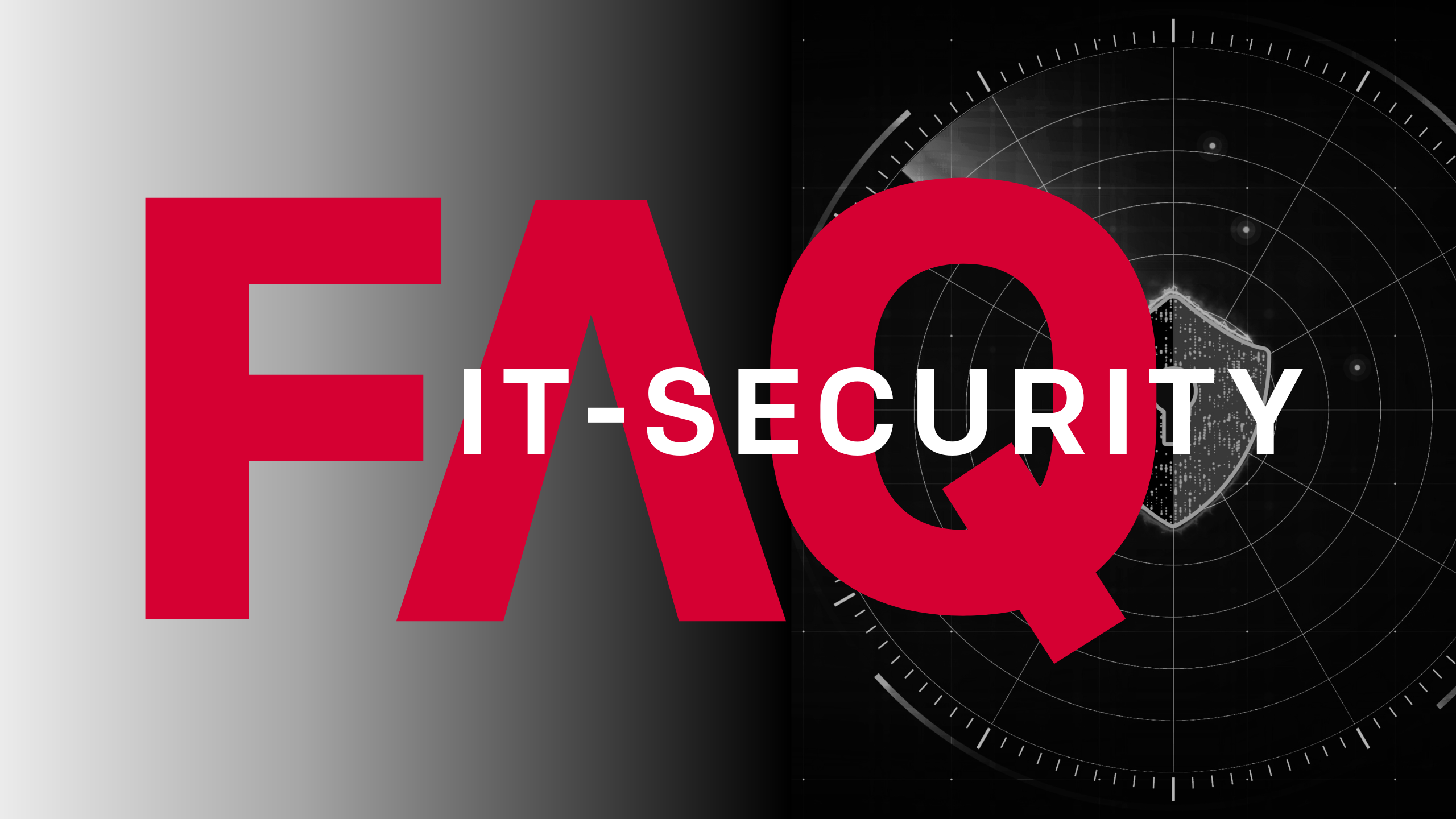10 essential measures to strengthen your IT defenses
In the world of ever-expanding digital horizons, security is not just a nice-to-have feature; it’s an absolute necessity. With cyber-attacks lurking everywhere, protecting your IT infrastructure requires strict security protocols. So, fasten your seatbelts as we take you on a joyride and explore 10 vital IT security procedures and tasks that you should adopt. Among the various security frameworks available, we’ll focus on the core functions of the National Institute of Standards and Technology (NIST) Framework: Identify, Protect, Detect, Respond, and Recover. Let’s dive in and uncover 10 essential measures to strengthen your IT defenses.
1. Identify: Asset Management
Before securing your infrastructure, you need to understand what you’re protecting. Create a precise inventory of all hardware and software assets. This will help you identify vulnerabilities and potential threats associated with each component.
Imagine having a comprehensive system that allows you to effortlessly identifies and tracks all your digital assets. With asset management, you can keep a watchful eye on every piece of technology, software, or data that contribute to the success of your business. It’s like having a superpower that grants you unparalleled control and visibility over your digital kingdom.
Gone are the days of uncertainty and confusion when it comes to managing your assets. Thanks to innovative IT security processes like asset management, you can now confidently and easily navigate through the vast landscape of digital resources. Get ready to embark on an awe-inspiring journey as we explore how this process can revolutionize your approach to IT security.
2. Identify: Risk Assessment
In this world of vulnerabilities, new ones emerge constantly. It’s like playing Whack-a-Mole, new challenges pop up every day, making it feel like a never-ending game! To address this ongoing issue, you can use tools like Tenable and Rapid7. These tools act as your trusty sidekicks in vulnerability management, continuously scanning and categorizing weaknesses in your network. They highlight the most pressing vulnerabilities allowing you to address them before they become a bigger headache than your morning coffee withdrawal. Whether these vulnerabilities are exposed to the wild internet or hiding within your cozy intranet, being aware of them is crucial to fix them. Take advantage of scanning, reporting, and patching like pros to stay ahead of these challenges.
3. Protect: Patch Management
Dealing with outdated software feels like an endless battle, trying to catch up with persistent attackers. But fear not, you have a powerful weapon in your arsenal: Patch management! By making it a routine and automating the process, just like your morning coffee fix, you can ensure that all your software and systems receive the latest patches. Staying on top of these updates will not only close the doors to those opportunistic attackers but also boost your system’s performance. Roll up your sleeves, stay vigilant with patching, and keep those sneaky exploiters away!
4. Protect: System Hardening
Streamline your systems by removing unnecessary software, usernames, and logins. It’s like decluttering your digital space and getting rid of dusty old relics. Also, disable any non-essential services. Think of it as turning off the “open for business” sign on things you don’t actually need. For an extra layer of security, follow a system hardening guide tailored specifically to your operating system and applications. This approach is like fitting your system with a tailored suit, reducing its potential attack surface. Let’s clean the house, enhance security measures, and make sure only the essentials are in control!
5. Protect: Implement Robust Password Policies
Fortify your defenses by using strong, intricate passwords to protect your sensitive information. It’s like building an unbreachable fortress for your digital kingdom. But, hey, remembering these passwords can be a real challenge right? That’s where a reliable password manager like Bitwarden comes to the rescue! Think of it as your personal password guardian, securely storing and managing all your passwords in one place. Additionally, it can generate unique, complex and difficult to crack passwords, for each of your online accounts, leaving those cyber villains scratching their heads in frustration.
6. Protect: Multi-Factor Authentication (2FA)
Enhance your security by implementing Two-Factor Authentication (2FA). It’s similar to adding an extra lock to your digital fortress. This nifty process requires users to prove their identity using not just one, but two different methods before gaining access, like a secret handshake followed by a retinal scan—creating double trouble for unauthorized intruders! With this additional layer of verification, 2FA makes it significantly more challenging for the bad guys to sneak their way in.
7. Detect: Anti-Virus Software
Protect your digital realm by using robust antivirus software. It acts like a team of cyber bodyguards, constantly scanning and eliminating lurking threats to keep your system secure and squeaky clean. But wait, there’s more! To stay ahead of evolving threats, make sure to update regularly your antivirus definitions, providing your cyber bodyguards with the latest intel and tools to tackle new enemies. Also, schedule routine scans to keep a watchful eye on your system’s security, similar to regular check-ups to detect potential intruders before they cause harm.
8. Detect: Continuous Monitoring
Stay ahead of digital threats with continuous monitoring. It’s like having a vigilant watchdog that keeps a close eye on your system at all times. By using network monitoring tools, you can easily track data flow, system logs, and user behaviors in real-time. Think of it as having a detective on the case, detecting any anomalies or suspicious activity before they can cause any harm. Harness the power of these monitoring tools, keeping a close watch on every digital aspect, and swiftly handling any unwanted surprises that may arise.
9. Respond: Incident Response Plan
Prepare yourself for the unexpected with an incident response plan, your reliable guide in times of security breaches. It’s similar to having a battle strategy ready to deploy when the enemy strikes. Your plan should consist of actionable steps, starting with isolating affected systems to contain the breach. Next, conduct a thorough investigation to understand the who, what, and how of the incident. Lastly, ensure clear communication by promptly notifying those affected, as transparency is crucial. However, remember that a plan’s effectiveness lies in its execution. So regularly test and update it to adapt to new threats, just like fine-tuning a battle strategy. With a well-crafted incident response plan in place, you can confidently face security breaches, minimize damage and restore order like the digital hero you are!
10. Recover: Regular Backups
Protect your critical data from security breaches by implementing routine backups. It’s similar to creating digital copies of your valuable files and securely storing them in an offsite vault. This way, you’ll have a lifeline to retrieve and restore your information if the worst happens. By doing so, you ensure that even if the worst happens, you have a lifeline to retrieve and restore your valuable information. Additionally, regularly test these backups to ensure their reliability, just like performing a fire drill to test your escape plan. By verifying their functionality, you can rest easy knowing that they’re ready to come to the rescue when needed. Take a proactive approach, back up your data, keep it safe and sound and ready to emerge unscathed from the clutches of any security breach!
Last words
In conclusion, ensuring a secure IT environment necessitates consistent dedication and using the appropriate tools and procedures. It’s crucial to conduct regular penetration testing, risk assessments, and process reviews to identify any new vulnerabilities that may arise. Keep in mind that cybersecurity is not a one-time endeavour but an ongoing commitment to shielding your digital assets from constantly evolving threats. By following a Security Framework, comprehending your risks, and implementing processes like those mentioned above, you’ll be well-prepared to safeguard your IT infrastructure effectively. Stay vigilant, stay proactive, and keep your digital realm secure!

Martin Bishoff
Martin is a certified CISSP security enthusiast. His focus is currently on expanding the information security consulting business in the DACH region, to ensure our customers are well protected.







